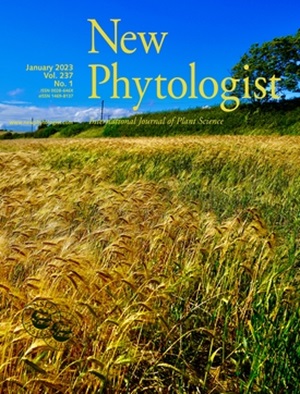Mechanisms driving functional divergence of transcription factor paralogs
IF 8.1
1区 生物学
Q1 PLANT SCIENCES
引用次数: 0
Abstract
SummaryTranscription factors (TFs) are core components of the regulatory toolkits that control gene expression. The sophistication of these regulatory toolkits dramatically increased during Eukaryotic evolution, accomplished in part by the duplication of existing TFs and the subsequent repurposing of these new paralogs. This process, termed functional divergence, drove the evolution of increasingly elaborate programs of gene expression and, in turn, cellular and organismal complexity. Mechanisms generating functional divergence of TF paralogs are thus of significant interest. Here, we review the numerous mechanisms that can lead to divergence of TF paralogs, drawing on studies from across Eukaryota but with a special emphasis on the plant kingdom. We end by placing these mechanisms back into a broader evolutionary context.驱动转录因子相似物功能分化的机制
转录因子是控制基因表达的调控工具箱的核心组成部分。在真核生物进化过程中,这些调控工具的复杂性急剧增加,部分是由现有tf的复制和随后这些新相似物的重新用途完成的。这一过程被称为功能分化,它推动了基因表达程序日益复杂的进化,进而推动了细胞和有机体的复杂性。因此,产生TF相似物的功能发散的机制具有重要的意义。在这里,我们回顾了可能导致TF相似物分化的众多机制,借鉴了来自真核生物的研究,但特别强调了植物界。最后,我们将把这些机制置于更广泛的进化背景中。
本文章由计算机程序翻译,如有差异,请以英文原文为准。
求助全文
约1分钟内获得全文
求助全文
来源期刊

New Phytologist
生物-植物科学
自引率
5.30%
发文量
728
期刊介绍:
New Phytologist is an international electronic journal published 24 times a year. It is owned by the New Phytologist Foundation, a non-profit-making charitable organization dedicated to promoting plant science. The journal publishes excellent, novel, rigorous, and timely research and scholarship in plant science and its applications. The articles cover topics in five sections: Physiology & Development, Environment, Interaction, Evolution, and Transformative Plant Biotechnology. These sections encompass intracellular processes, global environmental change, and encourage cross-disciplinary approaches. The journal recognizes the use of techniques from molecular and cell biology, functional genomics, modeling, and system-based approaches in plant science. Abstracting and Indexing Information for New Phytologist includes Academic Search, AgBiotech News & Information, Agroforestry Abstracts, Biochemistry & Biophysics Citation Index, Botanical Pesticides, CAB Abstracts®, Environment Index, Global Health, and Plant Breeding Abstracts, and others.
 求助内容:
求助内容: 应助结果提醒方式:
应助结果提醒方式:


